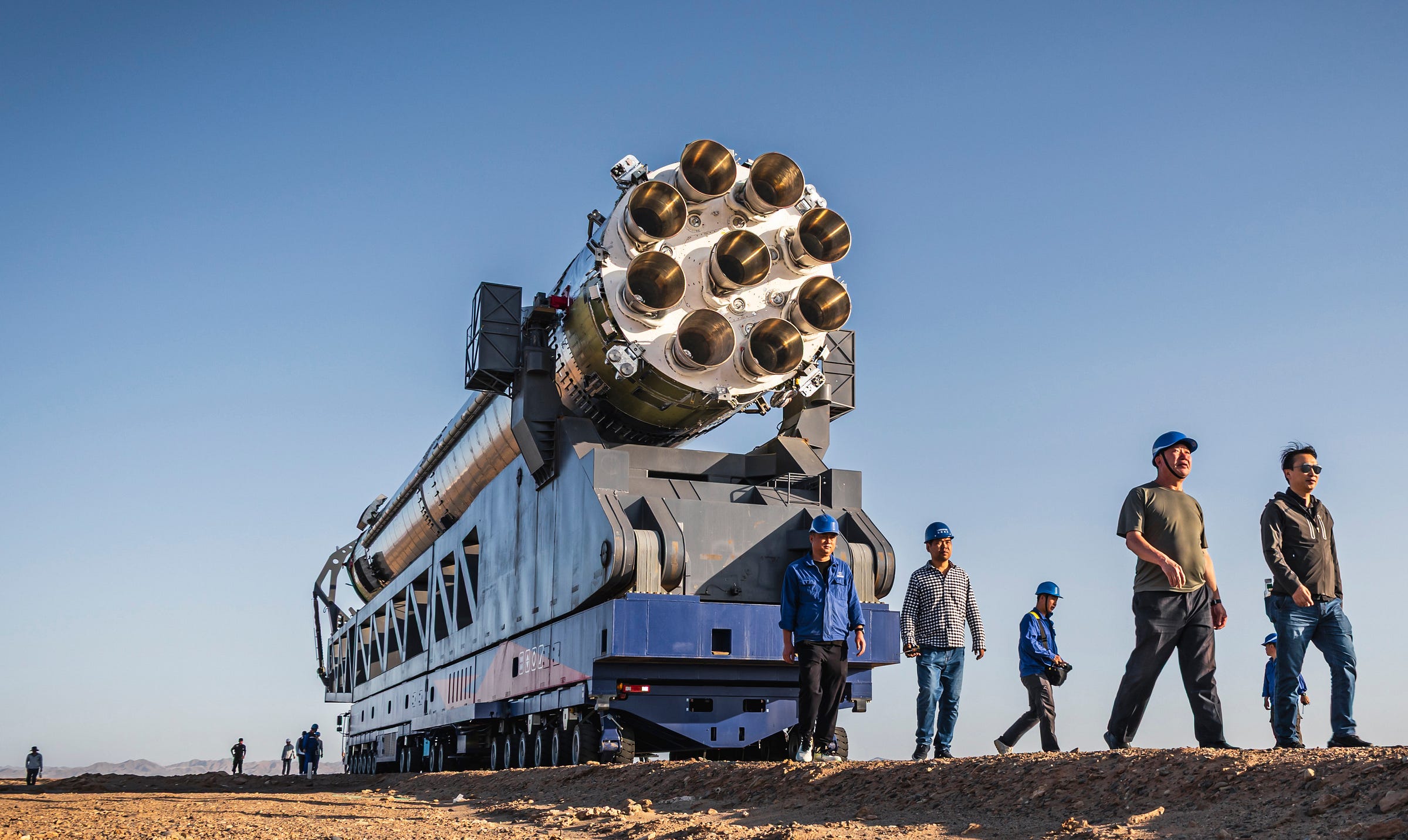Zhuque-3 to Debut in September or November, Zhang Changwu Says
Alongside discussion of testing, production, and competing.

During the remainder of the year, a Chinese launch company will fly and land the country's first reusable rocket. Currently, efforts to do so are projected to be a four-way competition between Space Pioneer, Galactic Energy, iSpace, and LandSpace, with the latter claiming to be ready to fly soon.
Recently on August 24th, a documentary about LandSpace’s Zhuque-3 efforts, involving interviews with key people involved, was released by FengShows (凤凰秀), part of Phoenix TV (凤凰卫视), under its X+ program focused on technological innovation.
Quickly into meeting with LandSpace’s Chief Executive Officer Zhang Changwu (张昌武), it was asked what short-term plans are for the partially reusable two-stage Zhuque-3. For which Zhang responded that they are still aiming for a maiden flight in the third quarter of the year, in September optimistically or November if technical challenges are faced. A flight vehicle for that flight is almost ready, appearing to be targeting a landing too.
One of those challenges could be a recent failure of Zhuque-2E, which uses the same second-stage engine and is at present believed, although unconfirmed, to have suffered from electrical issues in its gimbaling systems.
The path to getting the first Zhuque-3 launch vehicle to launch pad has been enabled by a series of major successes during tests, a 10-kilometer hop in September 2024, and, more recently, a first-stage booster static fire two months ago in June. That static fire was the first time nine TQ-12A liquid methane and liquid oxygen engines fired up and burned together to verify many critical systems. As Zhang explained in the documentary:
“Our [first-stage static fire] test is arguably the most significant experiment throughout the entire rocket development until before launch. Because the [first-stage static fire] test comprehensively examines the entire rocket's first-stage, including power systems, structures, control systems, and even safety systems. We say ‘how it flies in the sky is how we test it on the ground.’“
“So although it's only a 40-second experiment, for our entire [propulsion] system from pre-ignition to engine ignition, to engine gimbal during ignition process, we need to verify everything completely in the 40 seconds of [first-stage static fire] testing.”
The documentary also provided a glimpse into LandSpace's manufacturing methods, presenting a hands-on approach that differs from China’s ‘dark factory’ assembly lines. When touring a manufacturing facility in Jiaxing (嘉兴市), Zhejiang Province (浙江), an engineer explained:
"Rockets are different from cars. When you go to a car factory, it should be a long assembly line with various mechanized robotic arms assembling cars. The main reason cars are assembled this way is because their production volume is relatively large. For rockets, currently their production volume is still relatively small, so this manual method is actually more economical and reasonable."
If there are any problems with these translations please reach out and correct me.
Automated production is implemented in highly repetitive parts of vehicle manufacturing elsewhere, however. Primarily in TQ-12 and TQ-15 series engine production based out of Huzhou (湖州市), also in Zhejiang.
Having an economical process for building the Zhuque-2E and Zhuque-3 vehicles is going to be critical to compete with a growing number of domestic competitors, and somewhat internationally as well. In the documentary, Zhang Changwu asserted that the current expendable launch vehicles capable of launching more than 20,000 kilograms into orbit in China1, and from the American United Launch Alliance2, costs around 1 billion Yuan (approximately 139.84 million United States Dollars, as of August 25th), with SpaceX reducing the cost to customers to about 60 million United States Dollars (429 million Yuan) with its Falcon 9. Zhang believes reuse of Zhuque-3 with its production process will allow LandSpace to be competitive while maintaining healthy profits. Eventually, the company would like to sell launch services at a tenth of the cost of SpaceX’s.
Of course, Zhang recognises, SpaceX has a massive lead over the rest of the global space industry, having landed its first Falcon 9 booster in 2015, followed by four hundred repeats of the feat. Alongside that, individual boosters have started to reach the high twenties for their flight counts. Although Zhang doesn’t believe the technology gap is not too large, and that within about a decade, partial and fully reusable rockets will be common, thanks to a proliferation of use of full-flow staged-combustion engines3, of which SpaceX’s Raptor is the most well-known.
This would be the Long March 5 and Long March 5B.
This would be the company’s Vulcan-Centaur launch vehicle with its four or six solid rocket booster configurations.
LandSpace is in the early stages of developing its own full-flow staged-combustion engine, currently designated ‘BF-20’, burning liquid methane and liquid oxygen.


